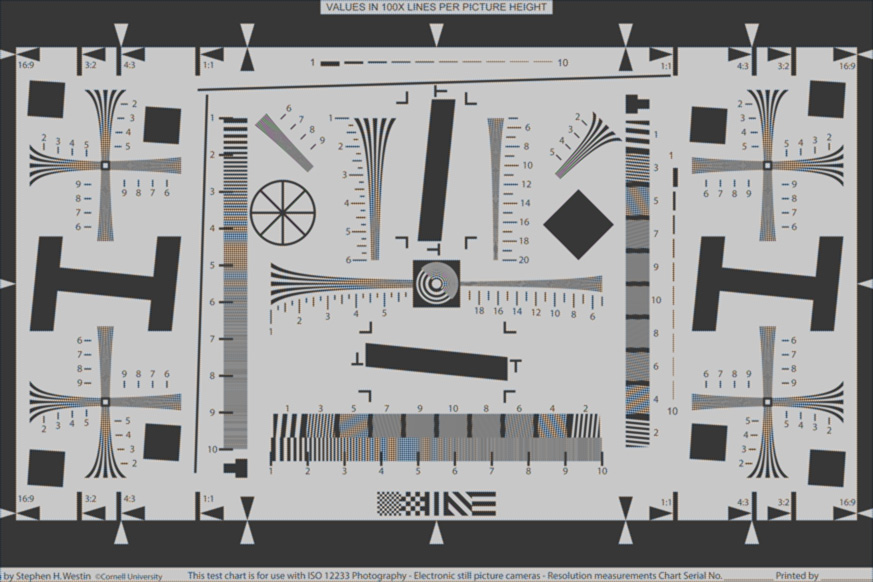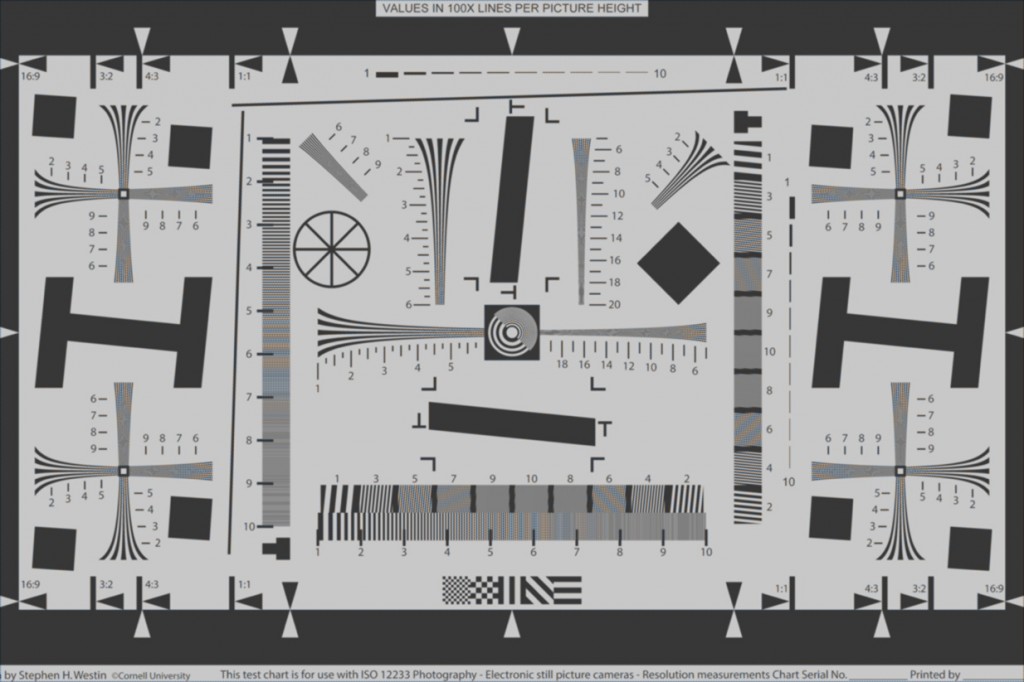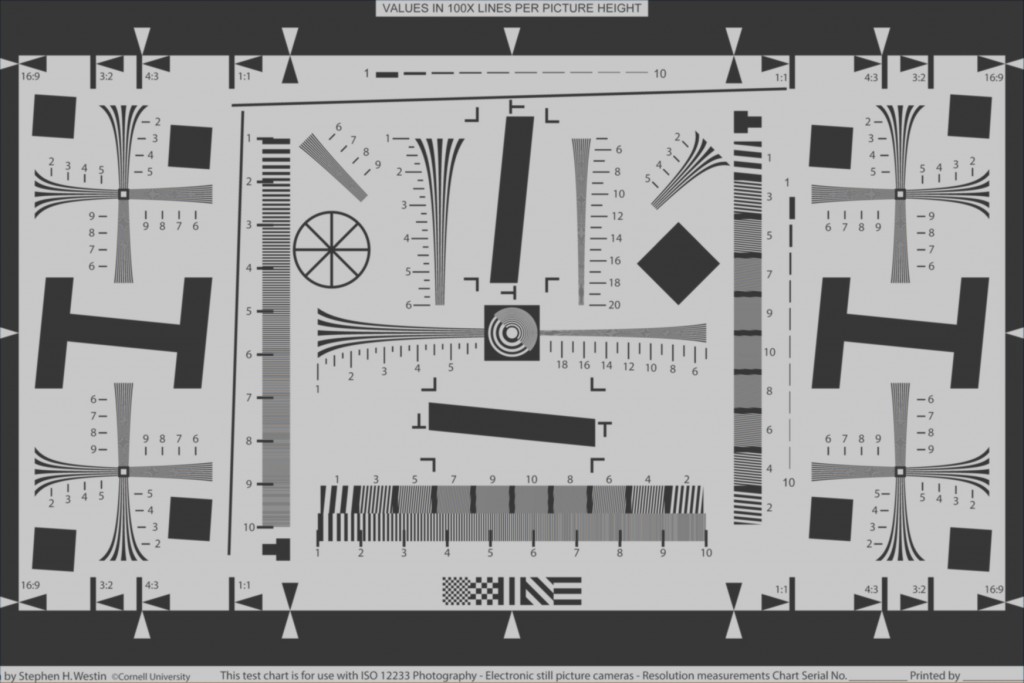I processed a reduced-contrast version of the ISO 12233 target, with white point of 200 and black point of 55, through the camera simulator of the last post.
To review, here are the specs of the simulated camera. Perfect, diffraction-limited lens set at f/8. 550 nm light used to calculate diffraction, even for the red and blue planes. Kernel used for diffraction convolution 4 times as wide and tall as the Sparrow distance. No vibration, no focus errors, no photon noise. 14 bit perfect ADCs in the camera. 100% fill factor. The camera’s primaries are the AdobeRGB primaries. Sensor dimensions are 3840 um x 2560 um. Bilinear interpolation for demosaicing. As Q goes up, the sensels get smaller, and there are more of them.
You may want to look at the images at actual size. I’ll put links to do that at the end of this post.
Q = 1:
Q = 1.414:
Q = 2:
Q = 2.828
False color is tamed at Q=2, and pretty much gone at Q=2.828. There still some aliasing even at Q=2.828. The false color artifacts are, not surprisingly, worse when the target values go from 0 to 255; if some one asks, I will post those images.
The links:




Leave a Reply